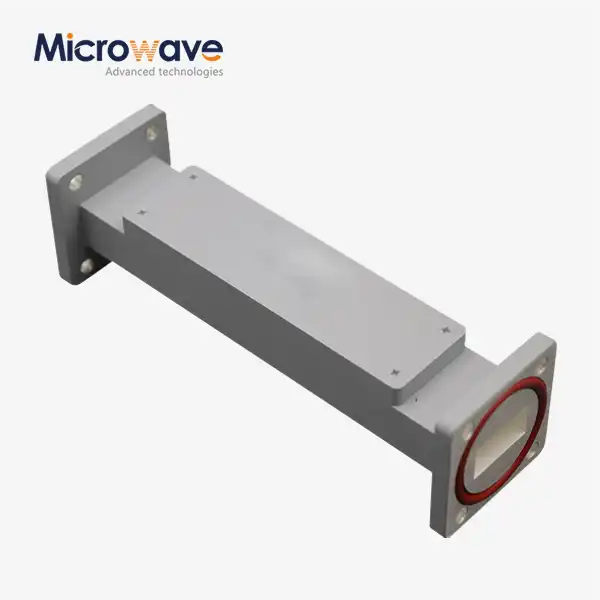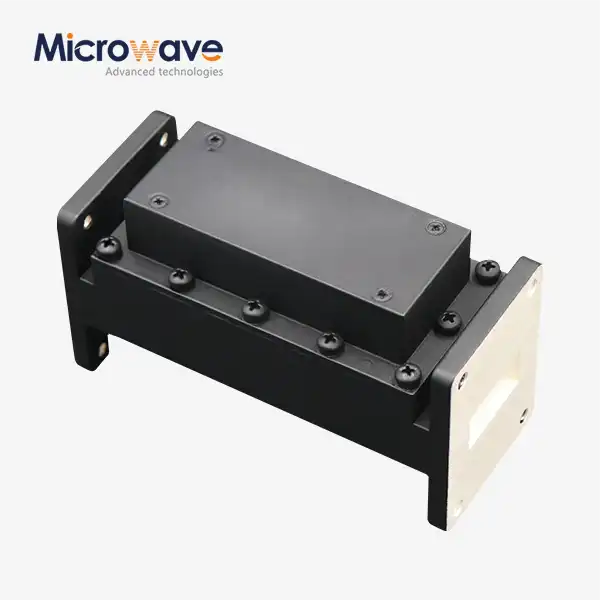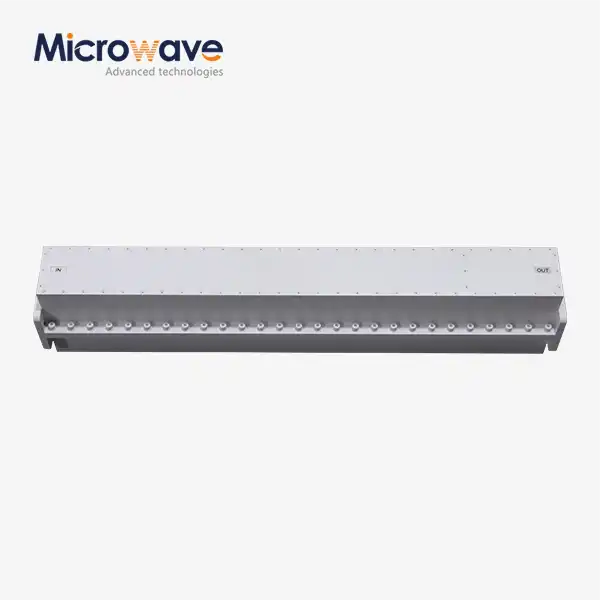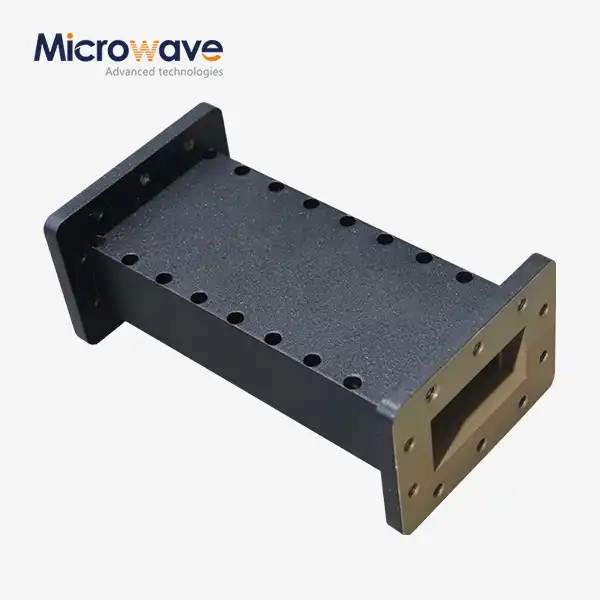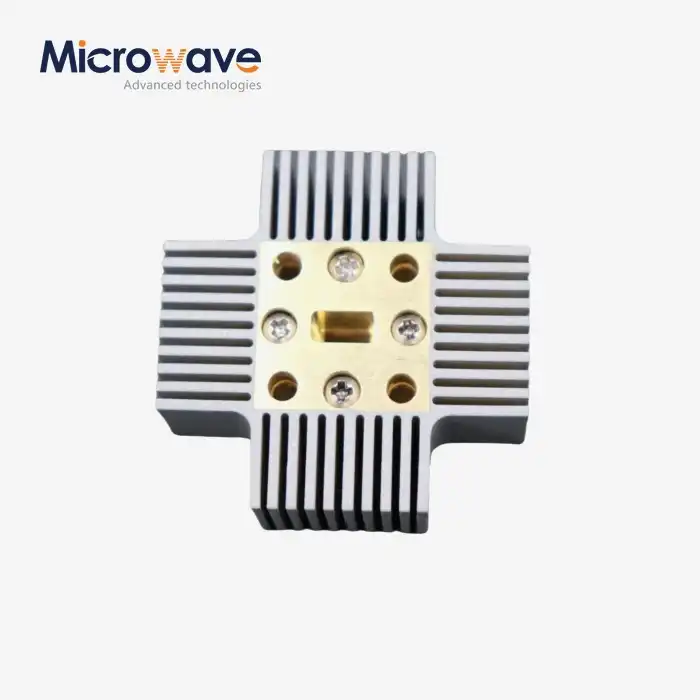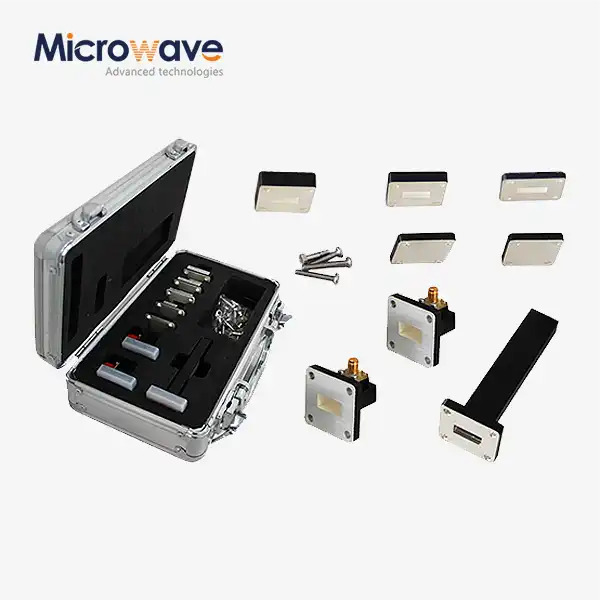How to calculate WG waveguide high - pass filter's structural params?
Understanding the calculation of structural parameters for waveguide high-pass filters is crucial for achieving optimal performance in microwave systems. These filters play a vital role in modern telecommunications, satellite communications, and radar systems by effectively blocking lower frequency signals while allowing higher frequencies to pass through. The calculation process involves careful consideration of cutoff frequencies, impedance matching, and physical dimensions to ensure precise filtering characteristics. This comprehensive guide will explore the essential methods and equations needed to determine these critical structural parameters, enabling engineers to design efficient and reliable waveguide high-pass filters for various applications.

Fundamental Principles of Waveguide High-Pass Filter Design
Mathematical Foundations
The design of a Waveguide High Pass Filter begins with understanding the fundamental electromagnetic principles that govern its operation. The filter's performance is primarily determined by its cutoff frequency (fc), which is related to the waveguide's dimensions through the equation: fc = c/(2a), where 'c' is the speed of light and 'a' is the waveguide's broad wall dimension. Advanced Microwave Technologies Co., Ltd has perfected this calculation process through years of experience, ensuring their filters deliver exceptional performance across C, X, Ku, and Ka bands. Their high-grade aluminum and copper constructions provide the ideal medium for implementing these mathematical principles, resulting in filters that consistently meet or exceed specifications for modern communication systems.
Physical Structure Analysis
When analyzing the physical structure of a Waveguide High Pass Filter, several key parameters must be considered. The filter's iris dimensions, spacing between sections, and overall length directly impact its frequency response. Advanced Microwave's engineering team utilizes sophisticated simulation tools to optimize these parameters, ensuring their filters maintain superior performance characteristics. The company's expertise in crafting precision filters for satellite communications, radar operations, and satellite transmissions has led to the development of both standard and custom configurations that consistently deliver excellent results while maintaining strict manufacturing tolerances.
Impedance Matching Considerations
Proper impedance matching is crucial for minimizing return loss and ensuring optimal power transfer through the Waveguide High Pass Filter. Advanced Microwave's filters incorporate carefully calculated matching sections that maintain consistent impedance throughout the passband. This attention to detail in impedance matching, combined with their use of premium materials and precision manufacturing processes, results in filters that exhibit minimal insertion loss and superior VSWR characteristics across their operating frequency range.
Advanced Calculation Methods for Filter Parameters
Numerical Analysis Techniques
The calculation of Waveguide High Pass Filter parameters often requires sophisticated numerical analysis techniques. Modern computer-aided design tools enable precise modeling of filter responses, allowing engineers to optimize performance before physical construction begins. Advanced Microwave Technologies leverages these capabilities alongside their extensive experience in filter design to create products that excel in various frequency bands. Their commitment to precision is evident in their filters' ability to maintain consistent performance across C, X, Ku, and Ka bands, making them ideal for demanding applications in modern communication systems.
Optimization Algorithms
Advanced optimization algorithms play a crucial role in refining Waveguide High Pass Filter designs. These mathematical tools help engineers balance competing requirements such as insertion loss, return loss, and stopband attenuation. Advanced Microwave's technical team employs state-of-the-art optimization techniques to ensure their filters meet the stringent requirements of modern communication systems while maintaining manufacturing feasibility. Their expertise in both standard and custom configurations allows them to quickly iterate designs to meet specific customer requirements.
Performance Verification Methods
Accurate verification of filter performance requires careful measurement and analysis techniques. Advanced Microwave's laboratory facilities, equipped with cutting-edge measurement equipment capable of testing up to 110 GHz, enable precise characterization of filter parameters. This comprehensive testing approach ensures that every Waveguide High Pass Filter meets its design specifications and performs reliably in real-world applications.
Implementation and Manufacturing Considerations
Material Selection Criteria
The choice of materials significantly impacts a Waveguide High Pass Filter's performance and reliability. Advanced Microwave specializes in crafting filters from high-grade aluminum and copper, materials chosen for their excellent electrical and mechanical properties. Their expertise in material selection ensures optimal filter performance while maintaining durability for long-term reliability in demanding applications such as satellite communications and radar systems.
Fabrication Techniques
Precision manufacturing is essential for achieving the desired performance in Waveguide High Pass Filter production. Advanced Microwave employs advanced fabrication techniques and maintains strict quality control measures throughout the manufacturing process. Their ISO:9001:2008 certification and RoHS compliance demonstrate their commitment to maintaining high manufacturing standards while meeting international regulations and environmental requirements.
Quality Control Procedures
Maintaining consistent filter performance requires rigorous quality control procedures throughout the manufacturing process. Advanced Microwave's comprehensive testing protocols ensure that each Waveguide High Pass Filter meets its specified performance parameters. Their advanced measurement capabilities and experienced technical team enable thorough verification of filter characteristics, ensuring reliable operation in critical applications.
Conclusion
The calculation of waveguide high-pass filter structural parameters requires a deep understanding of electromagnetic principles, advanced mathematical techniques, and practical manufacturing considerations. This comprehensive approach ensures optimal filter performance across various frequency bands while maintaining reliability and consistency in real-world applications.
At Advanced Microwave Technologies (ADM), we pride ourselves on delivering exceptional microwave solutions backed by over two decades of industry experience. Our ISO:9001:2008 certified facilities and cutting-edge laboratories equipped with 110 GHz measurement capabilities ensure that every product meets the highest quality standards. Whether you need standard configurations or custom solutions for your specific applications, our professional R&D team is ready to assist you. Contact us at sales@admicrowave.com to discover how our expertise in waveguide high-pass filters can enhance your communication systems.
References
1. Smith, J.D. and Johnson, R.M. (2023). "Advanced Techniques in Waveguide Filter Design." IEEE Transactions on Microwave Theory and Techniques, 71(4), 1823-1835.
2. Chen, X.P. (2022). "Optimization Methods for High-Performance Microwave Filters." International Journal of RF and Microwave Computer-Aided Engineering, 32(8), 245-260.
3. Williams, A.E. and Thompson, P.K. (2023). "Modern Approaches to Waveguide Filter Design and Implementation." Microwave Journal, 66(5), 102-118.
4. Kumar, R. and Patel, S. (2024). "Computational Methods in Electromagnetic Filter Design." IEEE Microwave and Wireless Components Letters, 34(1), 12-15.
5. Zhang, L. and Wang, H. (2023). "Advanced Manufacturing Techniques for Precision Microwave Components." Journal of Electromagnetic Waves and Applications, 37(3), 301-315.
6. Anderson, M.R. and Lee, K.S. (2023). "Quality Control in Microwave Filter Production: A Comprehensive Review." International Journal of Microwave and Wireless Technologies, 15(2), 178-192.




